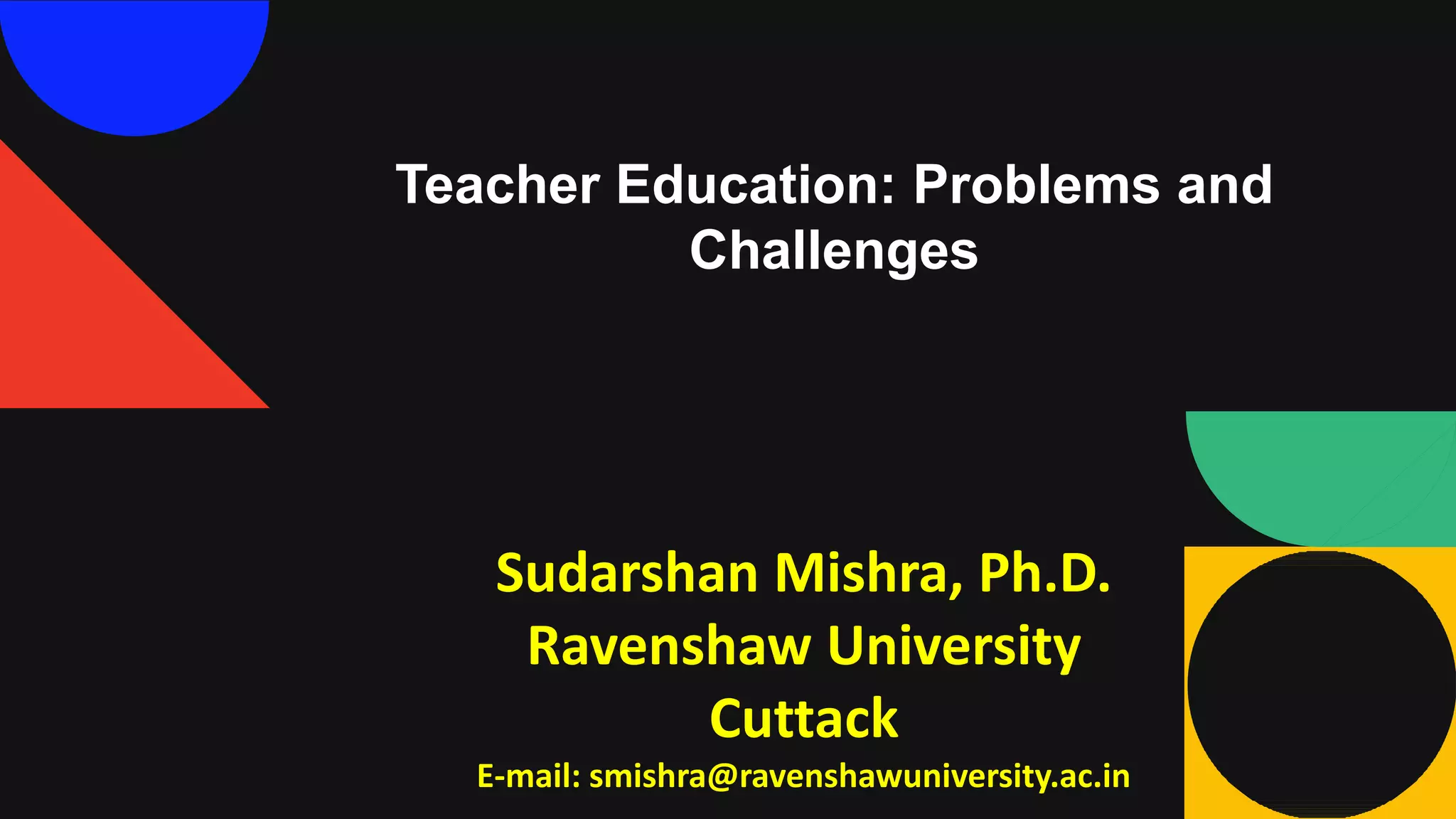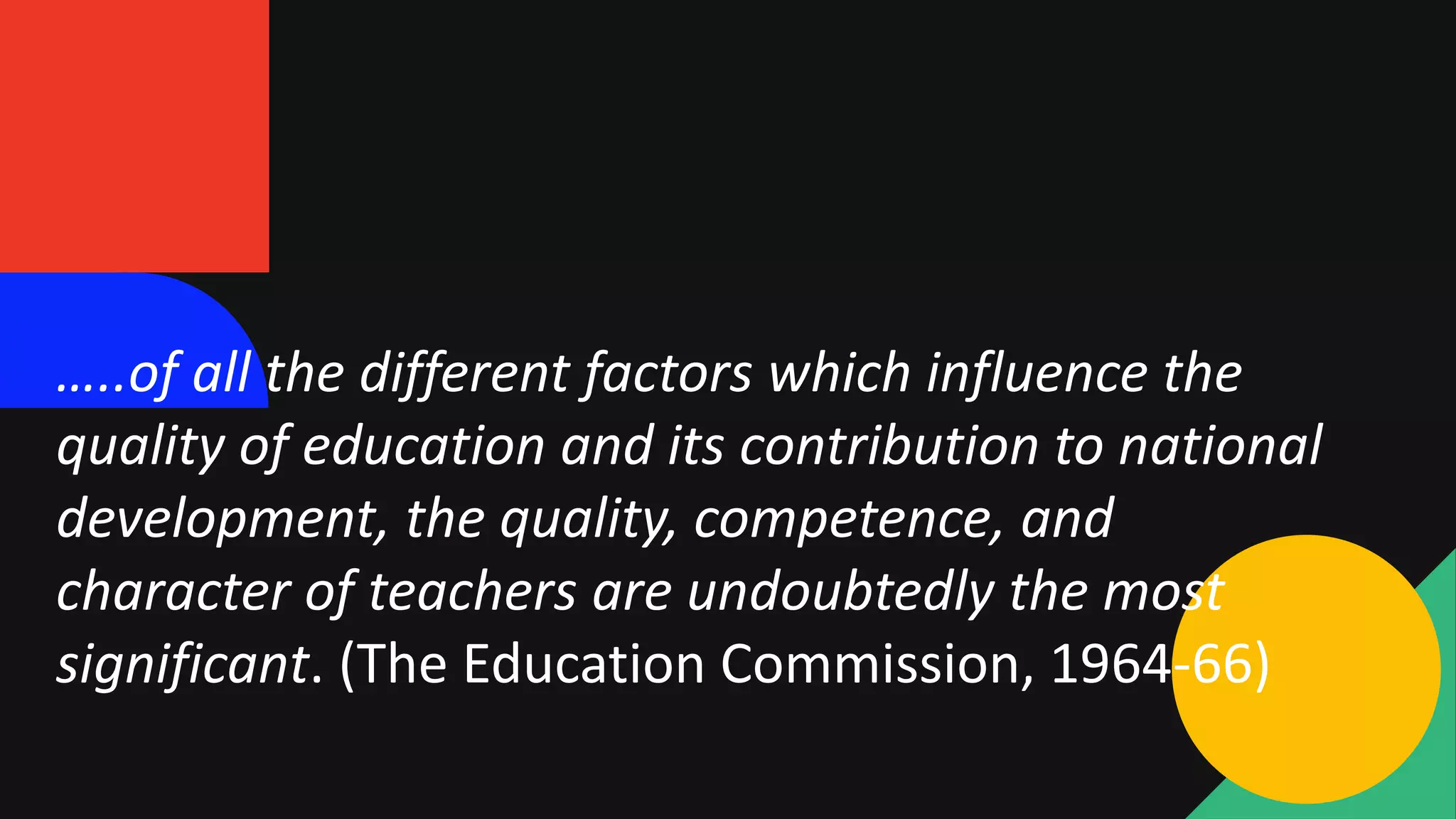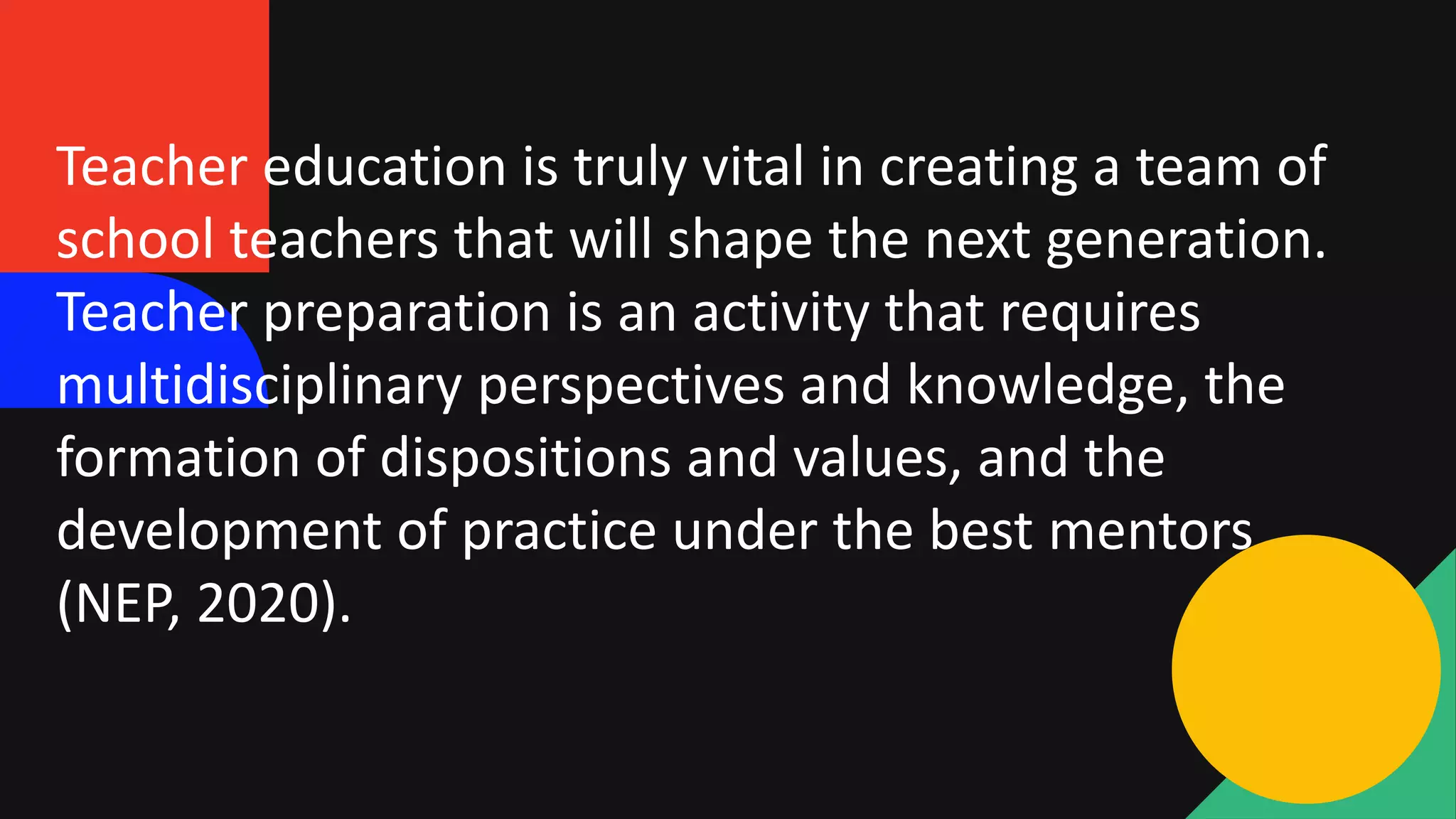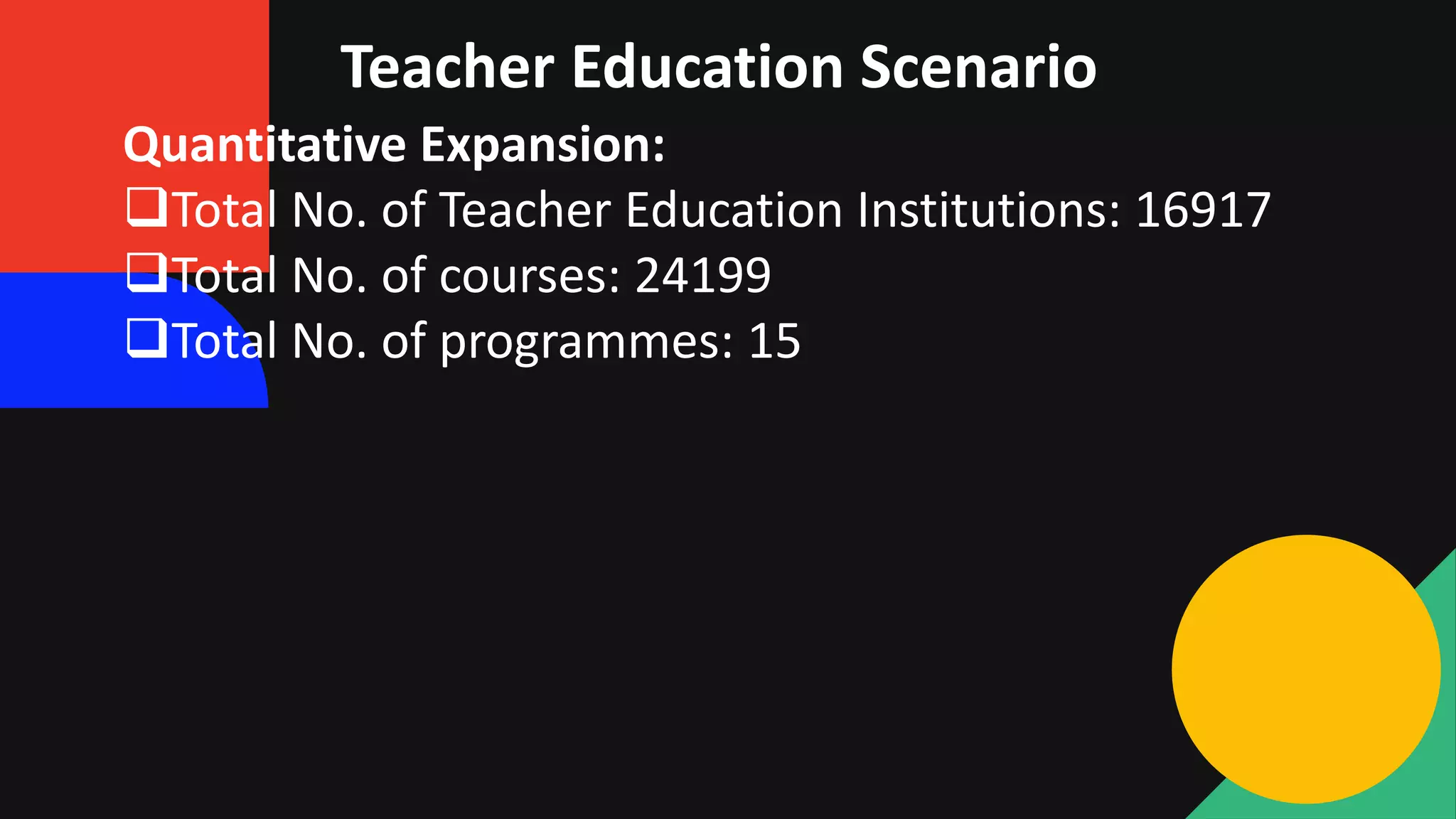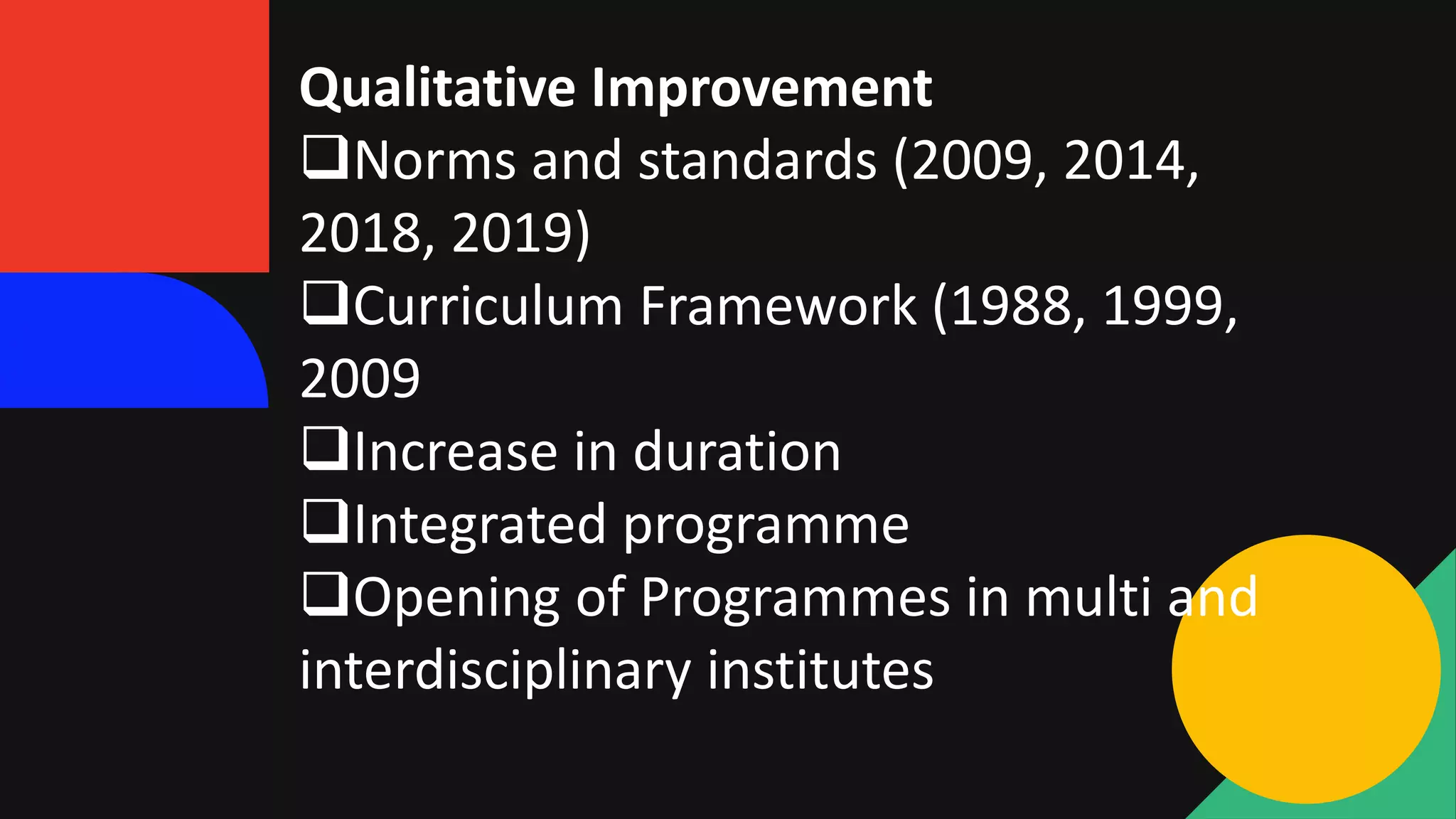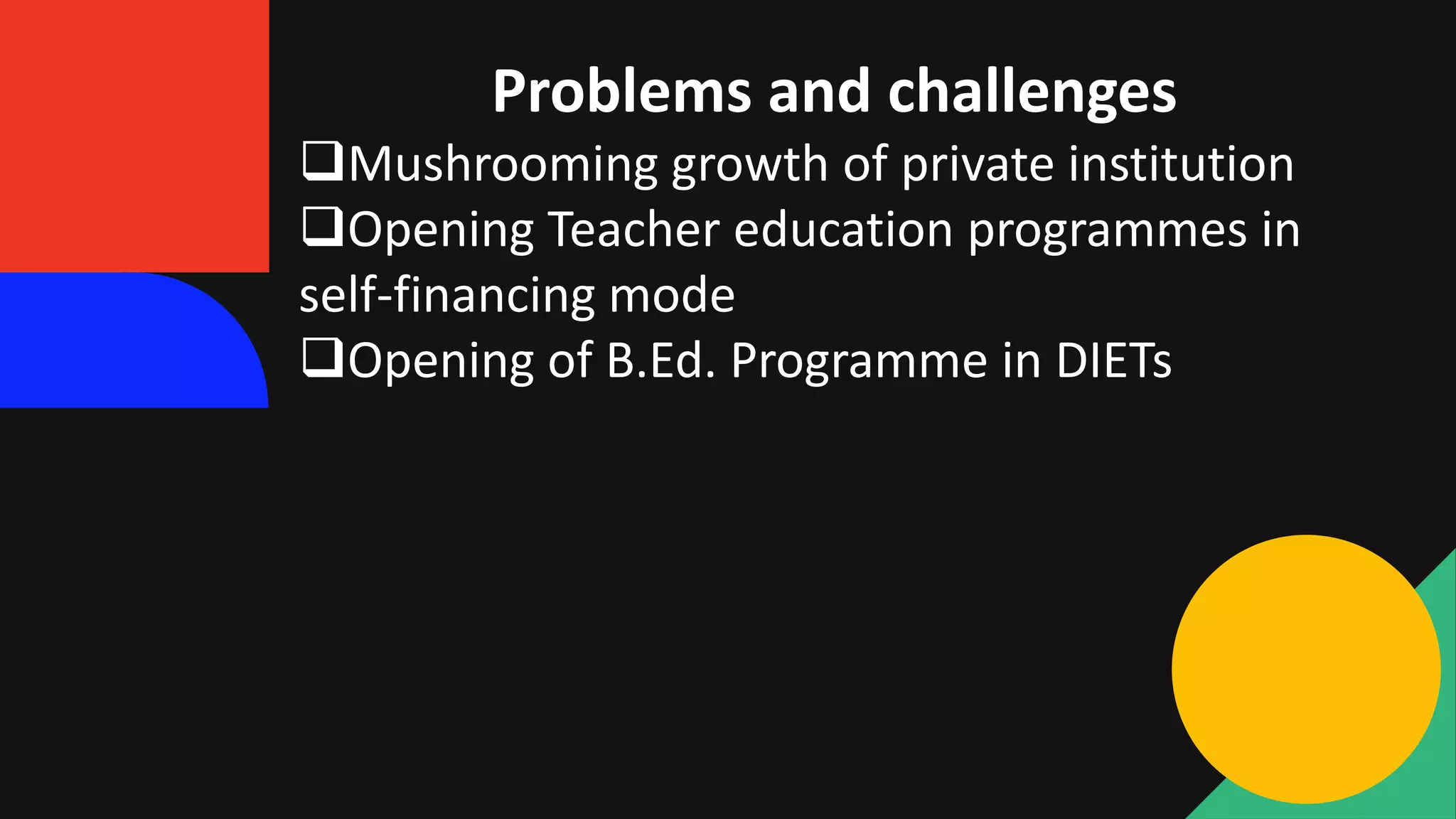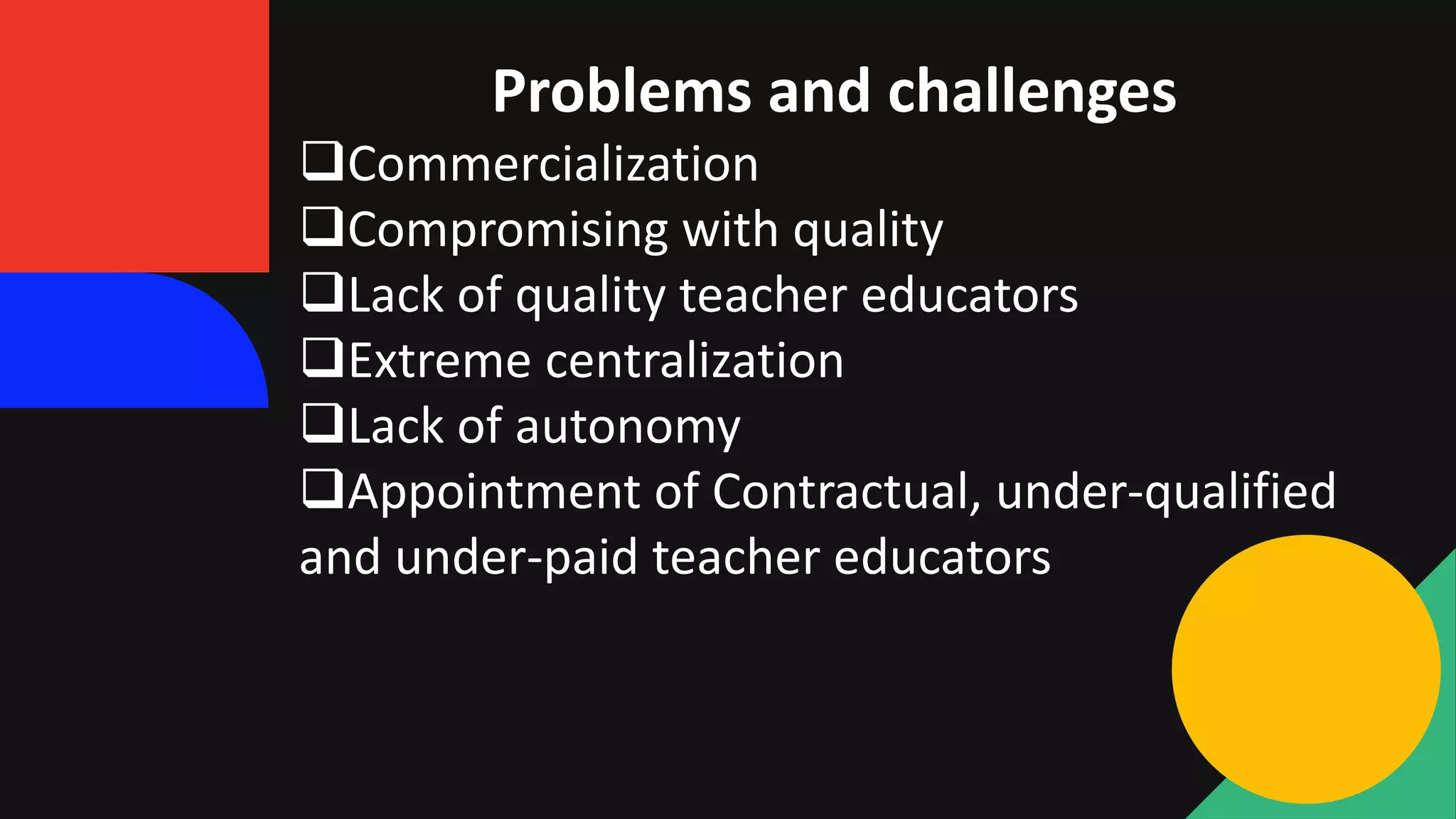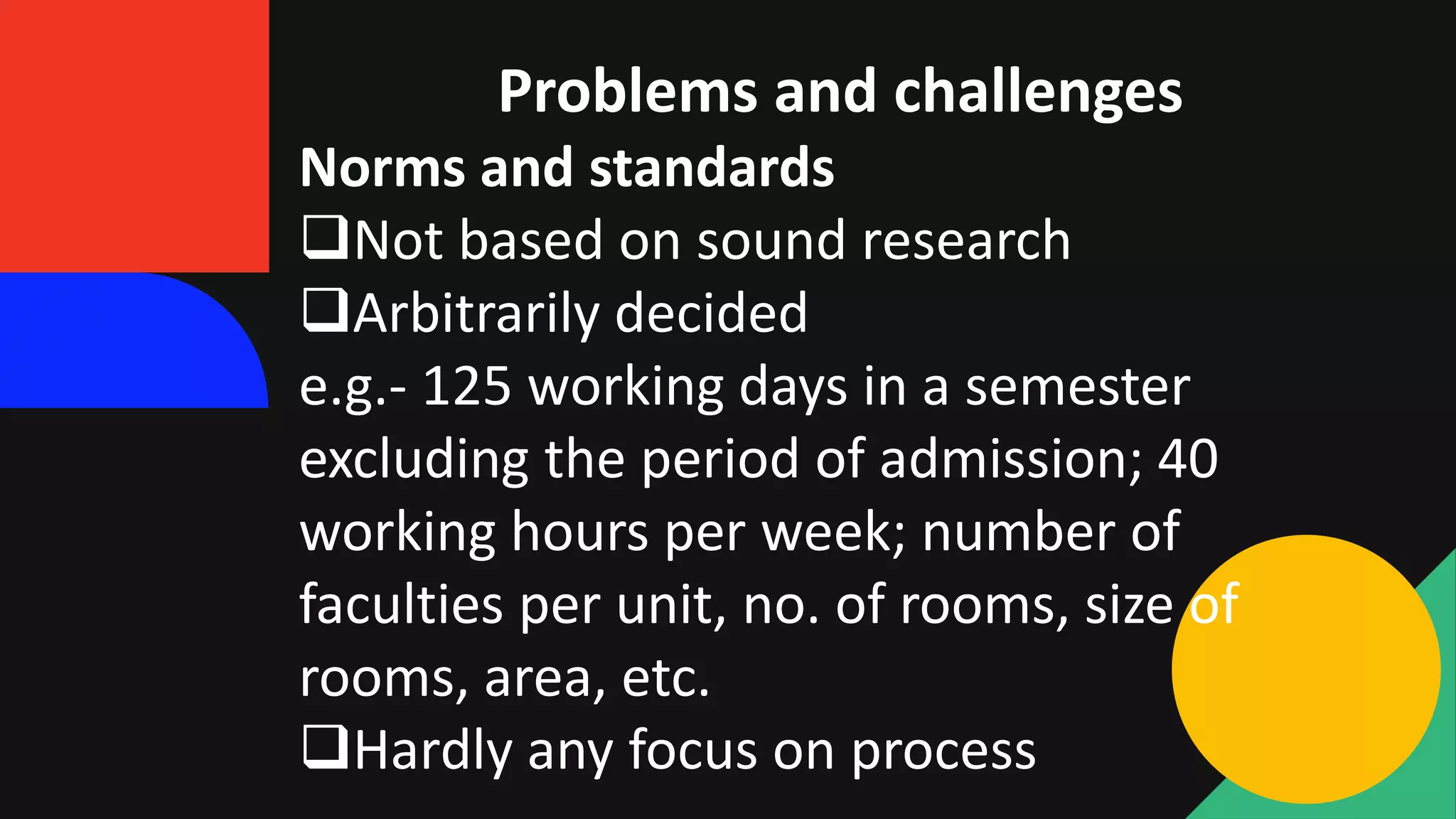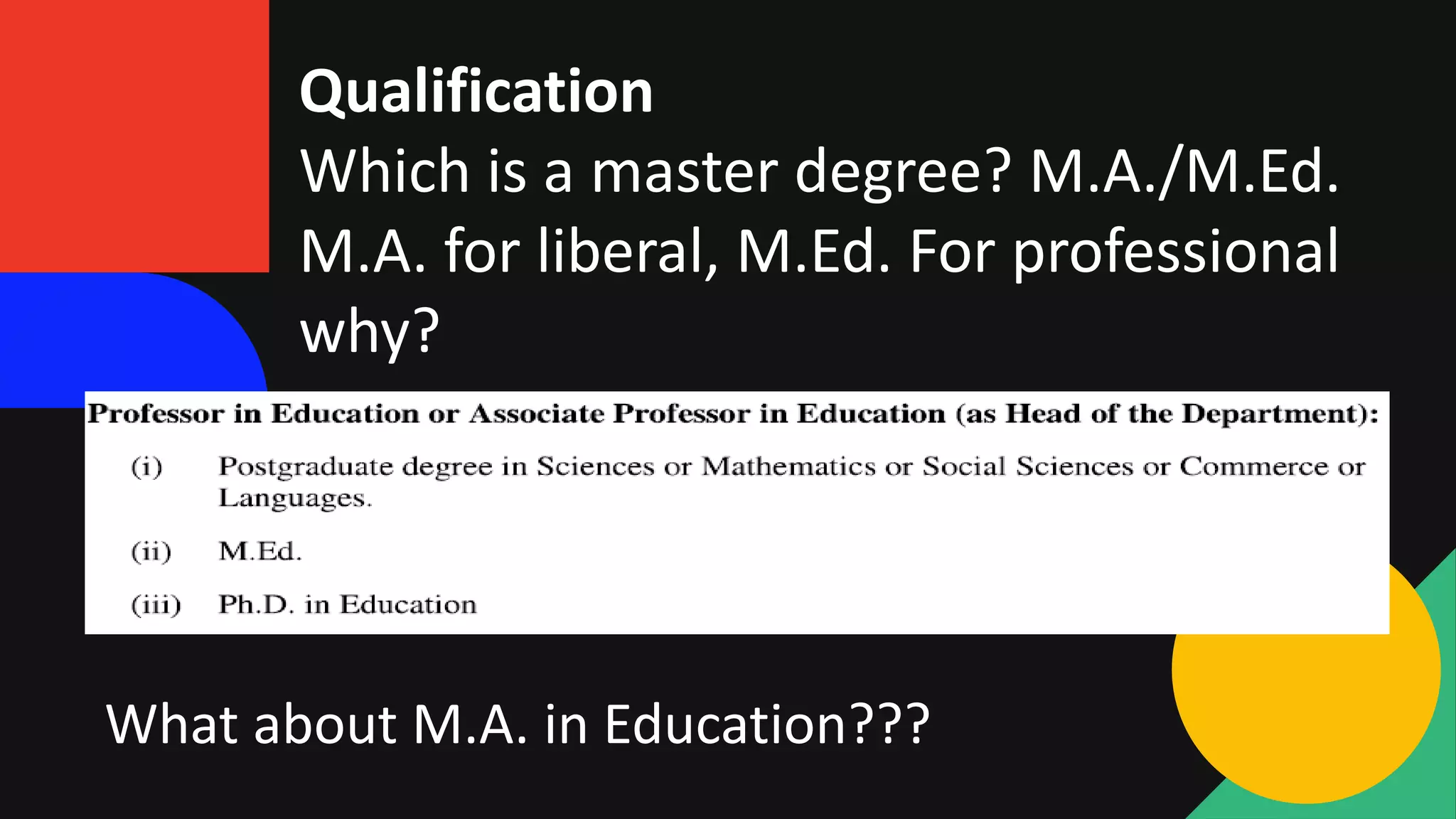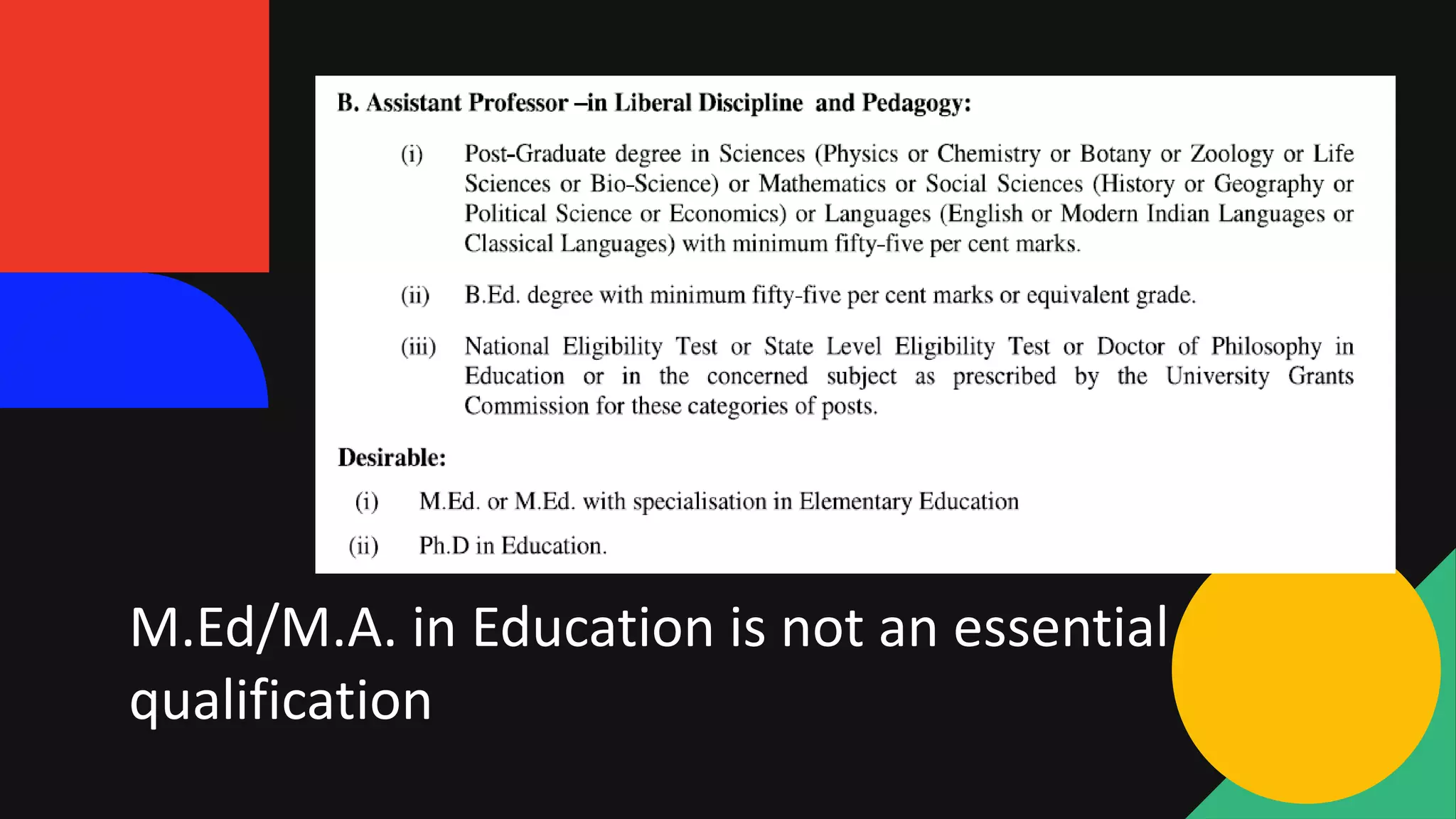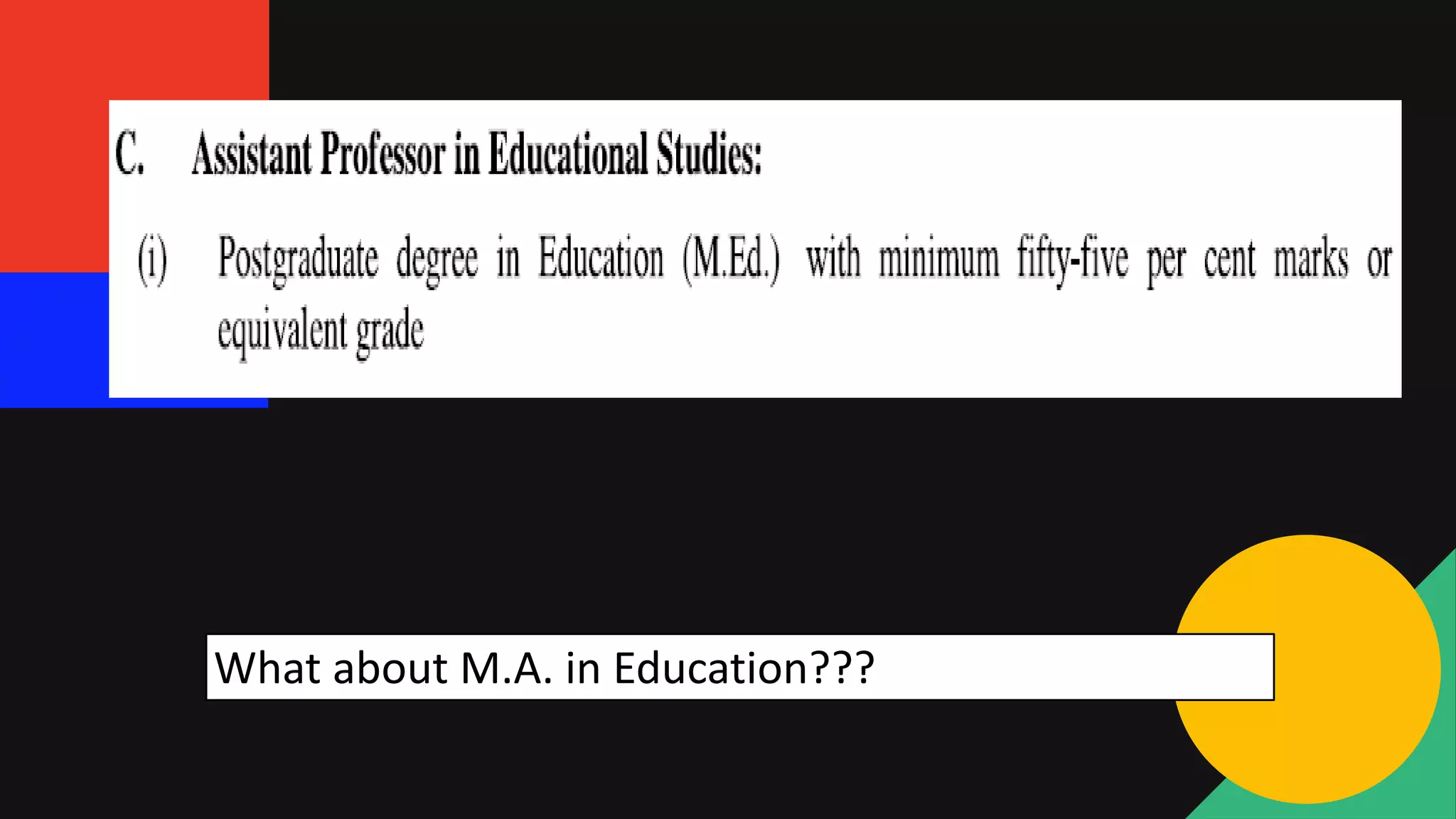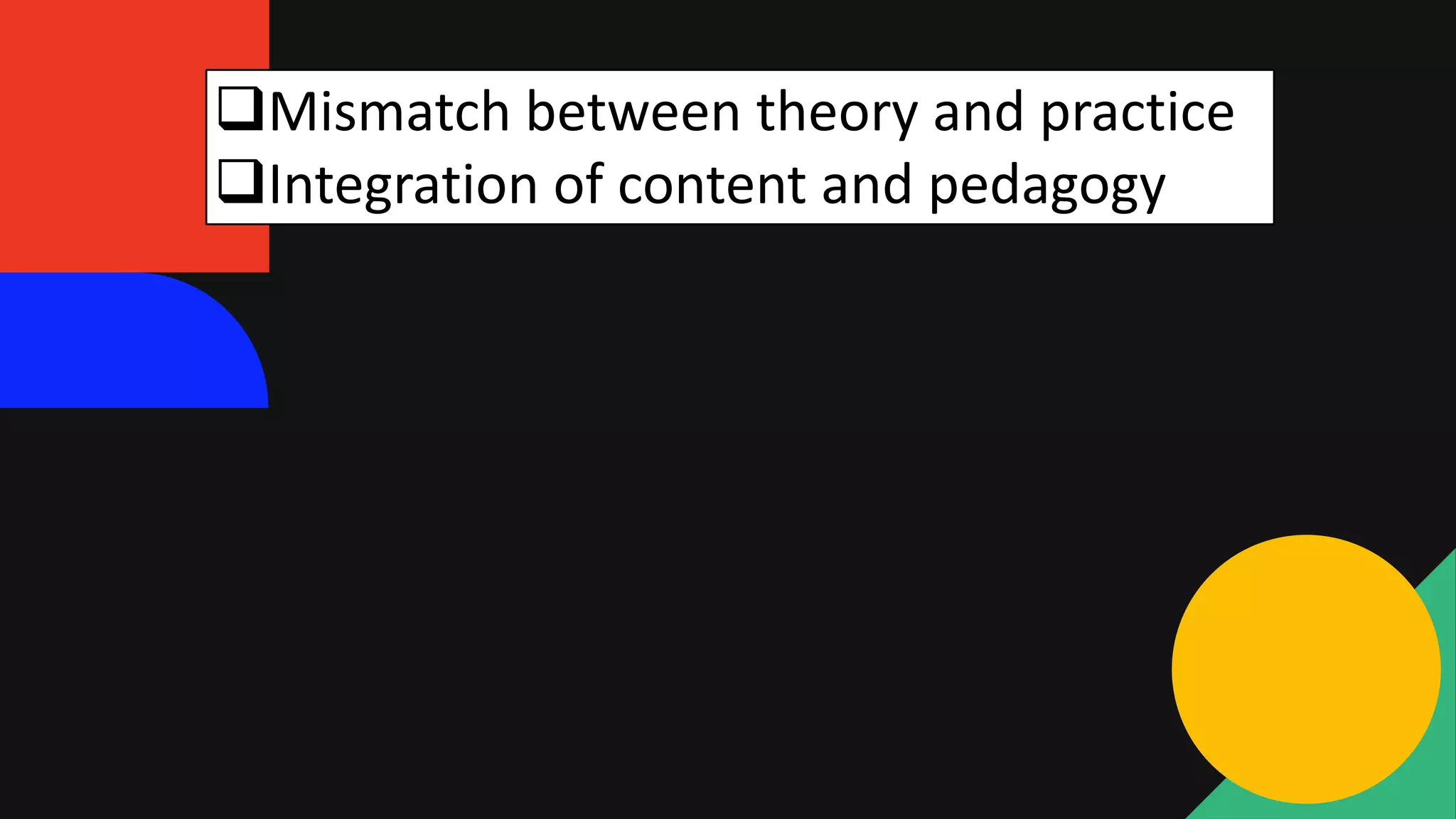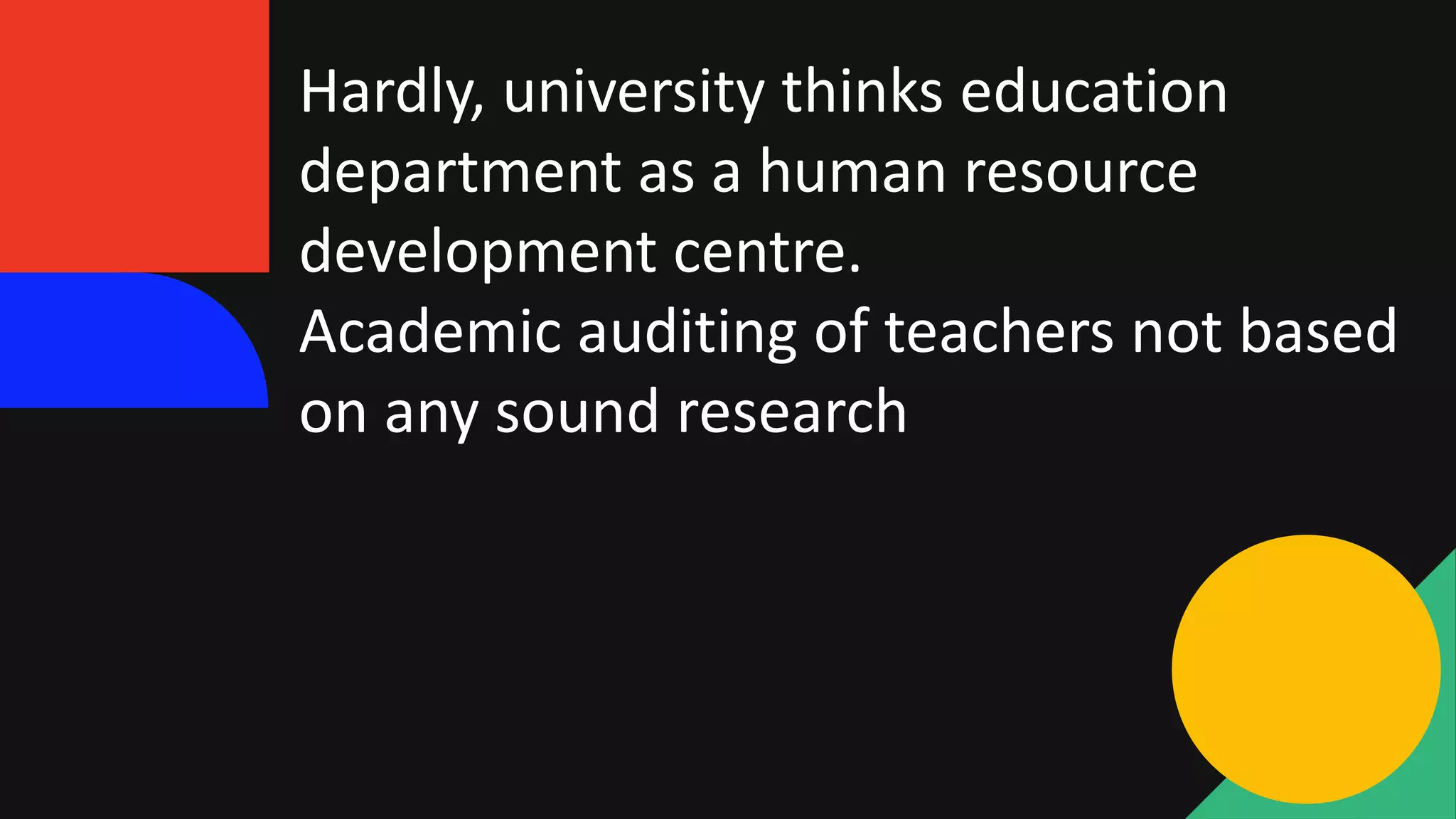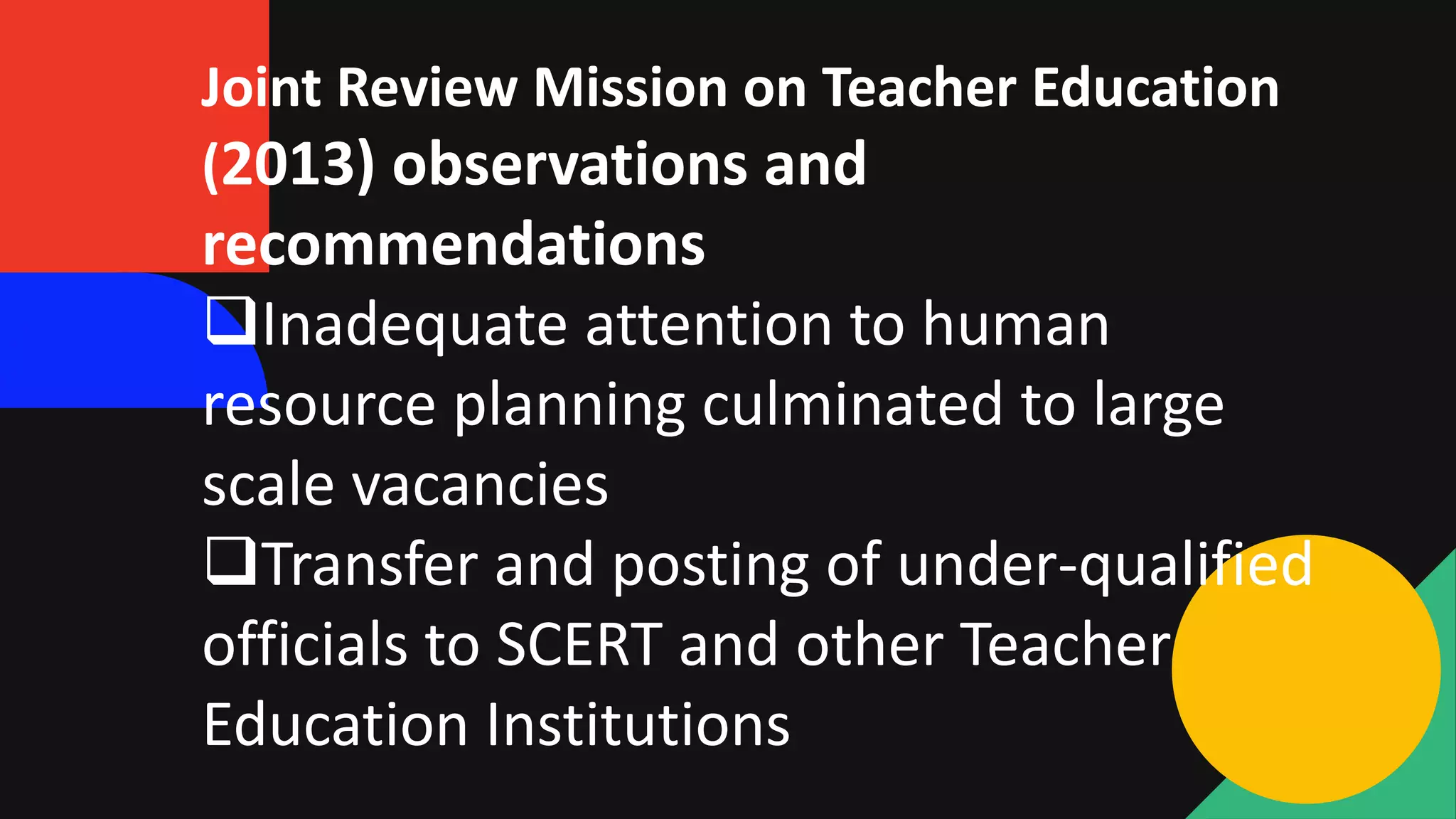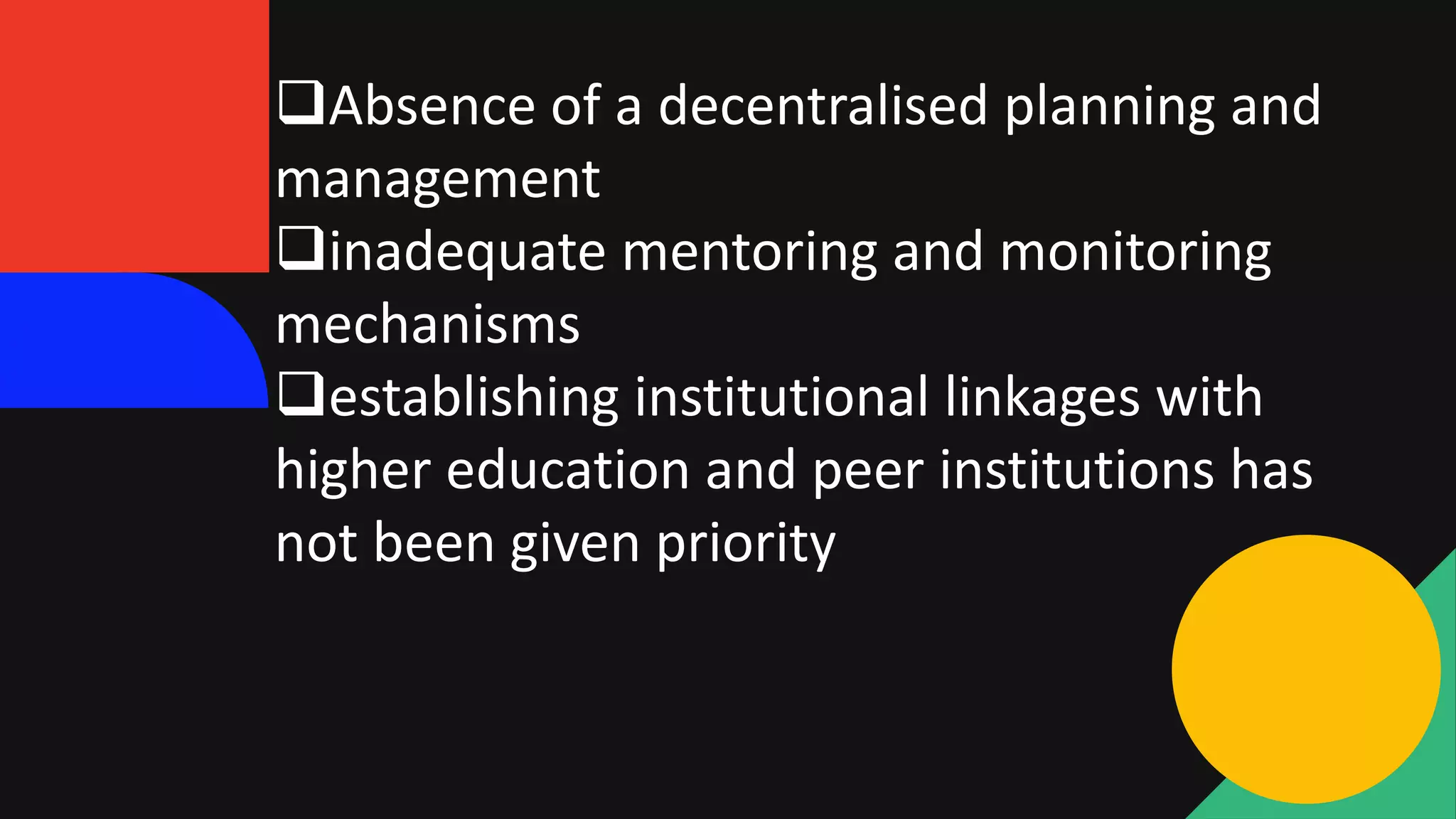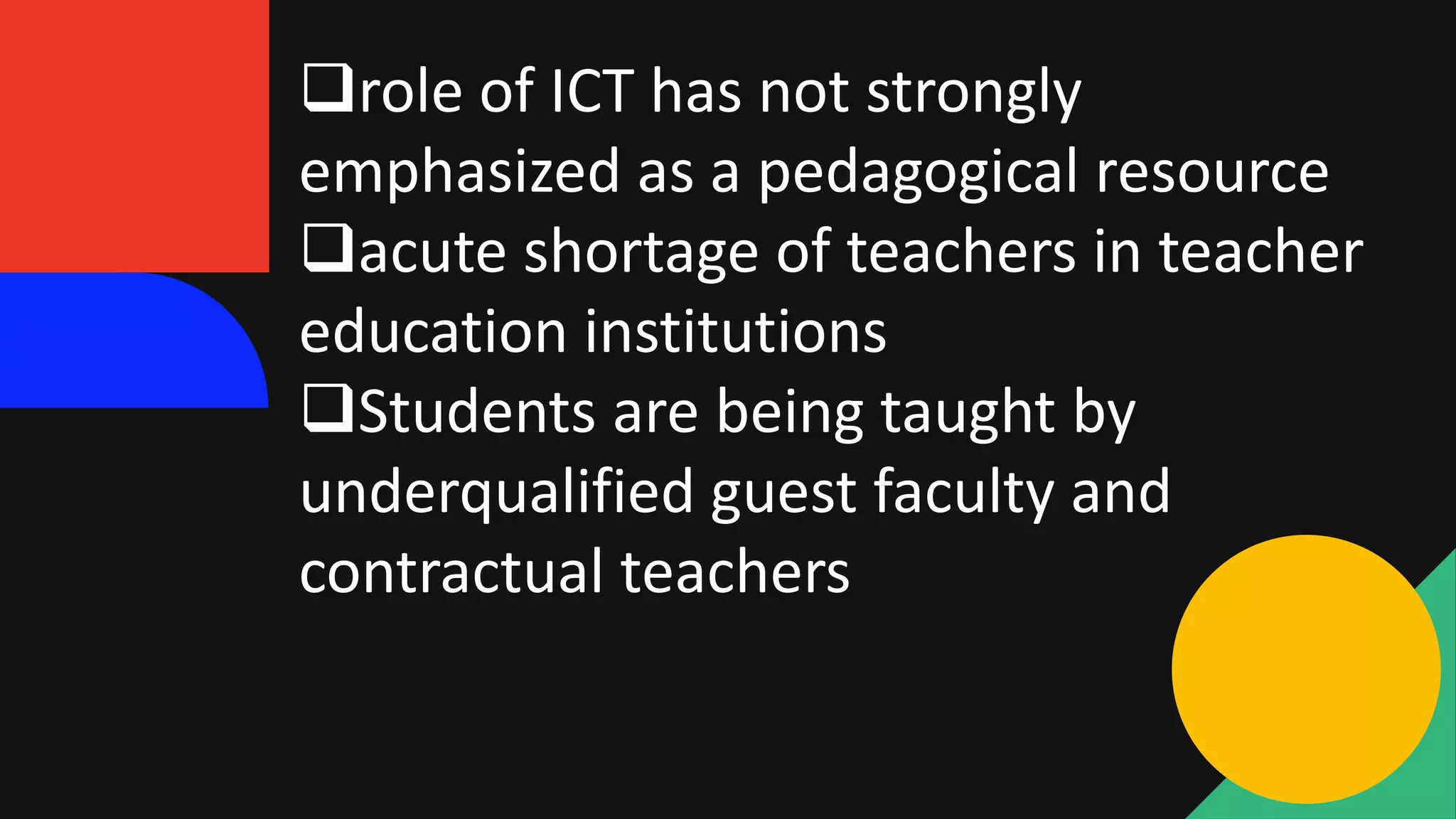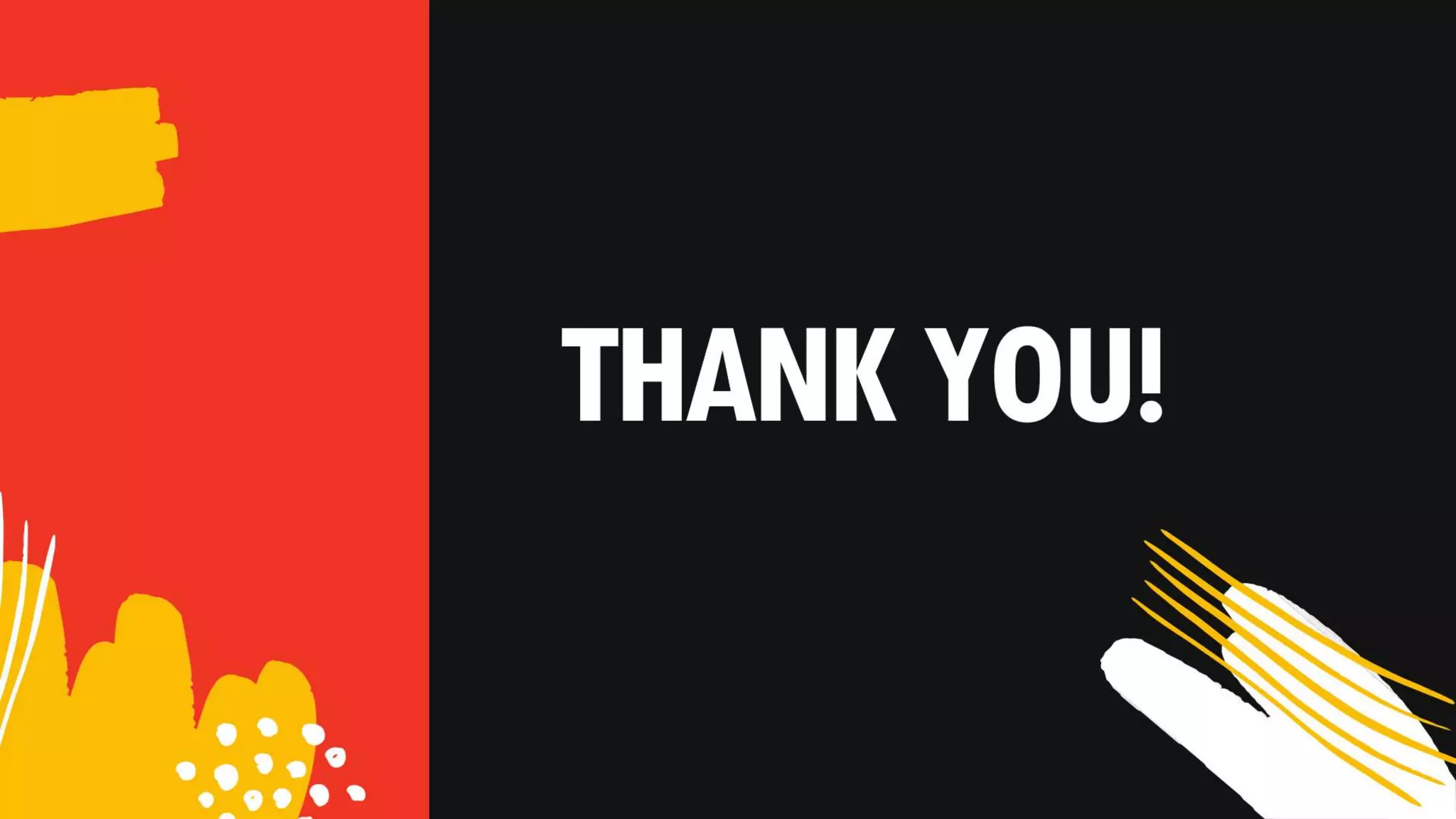Teacher education faces several problems and challenges in India. While the number of teacher education institutions and programs have expanded quantitatively, there are issues with the quality and standards. Private institutions lack proper oversight and prioritize commercialization over quality. Teacher educators are often underqualified, underpaid, and contractual staff. Norms and standards decided by regulators are not research-based and do not focus enough on pedagogical processes. There is also a disconnect between theory and practice in teacher education programs. Overall, reforms are needed to improve human resource planning, mentoring, institutional linkages, use of ICT, and qualifications of teacher educators to better prepare the next generation of teachers.
